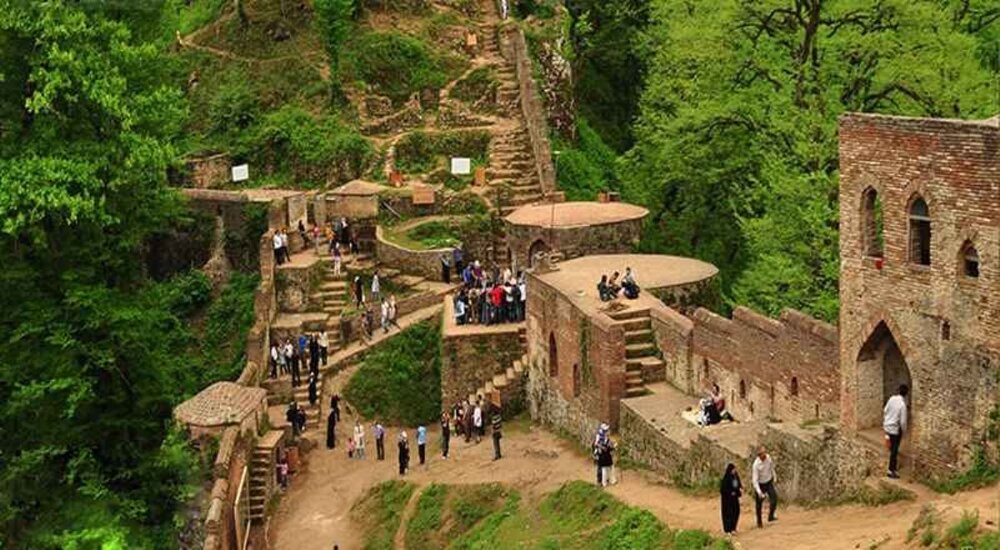Rudkhan Castle: a blend of nature, history and culture

Iran is home to hundreds of prehistorical, ancient, and medieval castles, fortresses, and strongholds each boasting their own eye-catching architecture. One of the largest military ones, Rukhan Castle occupies an area of about 50,000 square meters.
Made of brick and stone, this medieval structure is located 25 km southwest of Foman in Gilan Province. The castle has been built on two sides of a jagged rocky region so its architecture benefits from natural mountainous features.
Preliminary evidence, uncovered by digging, indicates the foundation of the structure was built in the Sasanian era (224–651) and rebuilt in the Seljuks reign (ca. 1040–1157).
To this day, there is no precise information regarding the date of its construction. However, what’s known is the castle was continually in use until the Zand Dynasty in the 18th century.
To access the castle one has go through a hilly winding route in a dense forest. Upon the arrival a big entrance gate flanked by relatively tall towers welcomes visitors.
Stepping inside, there are residential quarters, a bathhouse and a running spring passing through. This spring was the main water source for the fort but following an earthquake it ran dry.
However, with the tireless efforts of Iran’s Cultural Heritage Organization the spring is flowing again.
The east side of the fort is a bit smaller and has more military characteristics. It consists of two towers, another entrance, a prison and an emergency exit. Above the north and south walls are a number of octagonal areas and the deliberate cracks in their walls are assumed to have been for monitoring the adjacent area and shooting arrows at approaching enemies.
Above the front entrance was once an inscribed plaque (which is currently on display in a museum in Rasht) stating that the fort had been renovated for the first time between the years 1539 and 1542 for Sultan Hesamoddin. Historians say that during that time the castle was known as the Hesami Fort.
Though being threatened and even partly eroded by excessive humidity and vegetations rooting in the chinks of its old but lofty walls, Rudkhan Castle is still standing tall in very good condition as compared to other castles of the same time.
AFM/MG
Leave a Comment